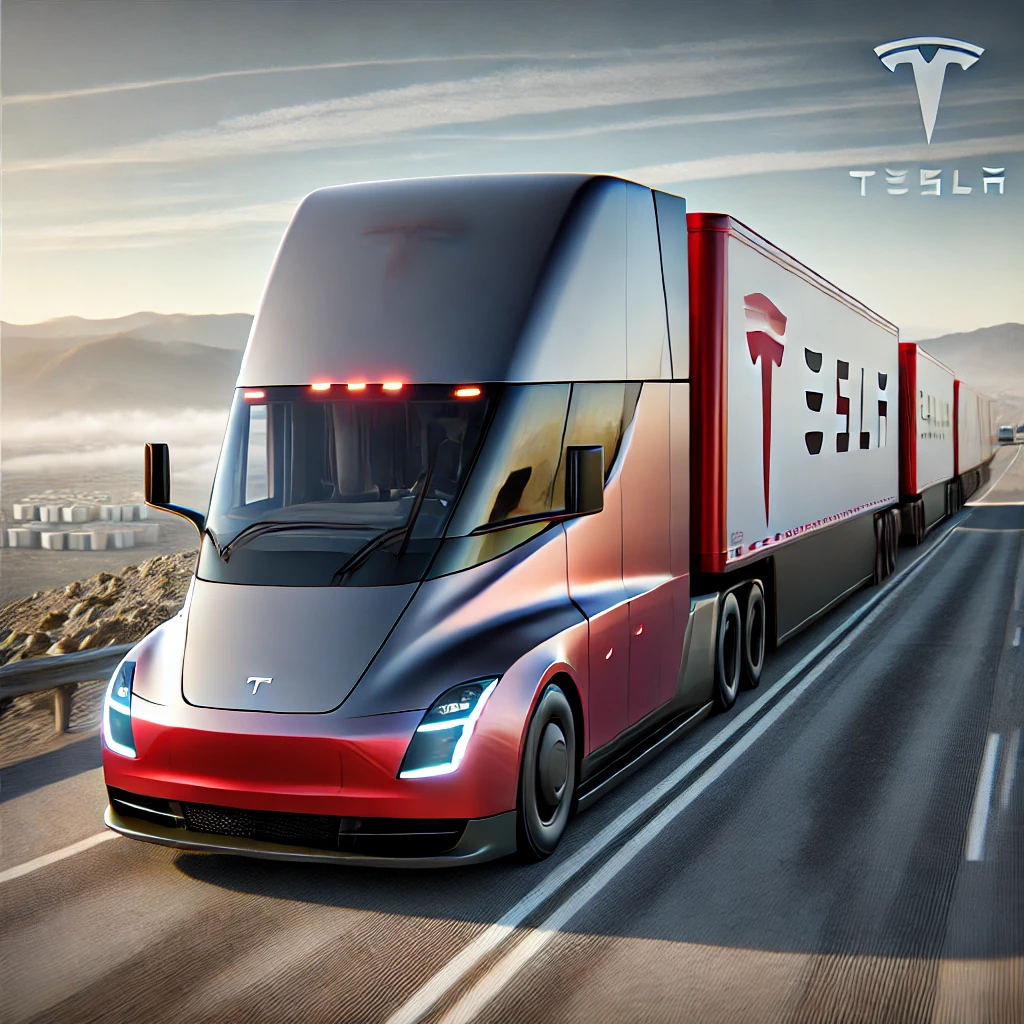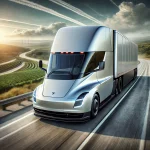The automotive industry is undergoing a revolutionary transformation with the rapid development of electric vehicles (EVs). As concerns over climate change and the need for sustainable transportation solutions grow, EVs are increasingly becoming the focus of technological advancements and innovation. This article explores the latest technologies used in electric vehicles, their benefits, and the prospects for future development.
Advanced Battery Technologies
One of the most critical components of an electric vehicle is its battery. Recent advancements in battery technology have significantly improved the efficiency, range, and affordability of EVs. Lithium-ion batteries, which have been the standard, are now being enhanced with new materials and designs to increase energy density and reduce charging times. Solid-state batteries, for example, promise higher energy capacity, faster charging, and improved safety compared to traditional lithium-ion batteries. These batteries use a solid electrolyte instead of a liquid one, which reduces the risk of overheating and fires.
Another promising development is the use of silicon anodes in batteries. Silicon can store much more energy than graphite, the material currently used in most battery anodes. This innovation could potentially increase the range of electric vehicles by up to 20-40% without increasing the battery’s size or weight. Additionally, research into lithium-sulfur and lithium-air batteries is ongoing, with the potential to provide even greater energy densities and cost reductions in the future.
Fast Charging Infrastructure
The availability of fast-charging infrastructure is crucial for the widespread adoption of electric vehicles. Recent advancements in charging technology have made it possible to recharge EVs much more quickly than before. Ultra-fast chargers, capable of delivering up to 350 kW of power, can charge an EV battery to 80% in as little as 15-20 minutes. Companies like Tesla, Electrify America, and Ionity are leading the way in deploying these high-power charging stations across major highways and urban areas, making long-distance travel more feasible for electric vehicle owners.
Moreover, advancements in wireless charging technology are beginning to emerge. Wireless or inductive charging allows EVs to be charged without the need for physical connectors, enhancing convenience and reducing wear and tear on charging ports. Dynamic wireless charging, which enables vehicles to charge while in motion using embedded road coils, is also being researched and could revolutionize the way we think about refueling EVs.
Autonomous Driving and Connectivity
Electric vehicles are often at the forefront of autonomous driving technology and connectivity features. The integration of advanced driver-assistance systems (ADAS) and artificial intelligence (AI) allows for semi-autonomous and fully autonomous driving capabilities. Tesla’s Autopilot and Full Self-Driving (FSD) systems, Waymo’s autonomous taxis, and other similar technologies demonstrate the potential of EVs to revolutionize personal and public transportation.
Connectivity features, such as over-the-air (OTA) updates, ensure that EVs can receive the latest software enhancements and security patches without needing to visit a service center. This capability keeps the vehicle up-to-date with new features and improvements, enhancing the overall user experience and extending the vehicle’s lifespan. Furthermore, vehicle-to-everything (V2X) communication is emerging as a significant innovation, enabling EVs to communicate with each other and with infrastructure to enhance safety and traffic management.
Lightweight Materials and Aerodynamic Design
The use of lightweight materials and aerodynamic design is another area where electric vehicles are making significant strides. Reducing the weight of the vehicle helps improve its efficiency and range. Manufacturers are increasingly using materials like aluminum, carbon fiber, and high-strength steel to make EVs lighter without compromising safety or durability. Aerodynamic designs also play a crucial role in reducing drag, which in turn improves energy efficiency and extends the vehicle’s range. Innovations such as active grille shutters, streamlined body shapes, and underbody panels contribute to these aerodynamic enhancements.
Additionally, advanced manufacturing techniques, such as 3D printing and the use of composites, are being utilized to further reduce weight and increase structural integrity. These methods allow for more complex and efficient designs that traditional manufacturing processes cannot achieve, leading to better-performing and more aesthetically pleasing electric vehicles.
Sustainability and Environmental Impact
Electric vehicles offer significant environmental benefits compared to traditional internal combustion engine vehicles. They produce zero tailpipe emissions, which helps reduce air pollution and greenhouse gas emissions. The shift towards renewable energy sources for electricity generation further enhances the sustainability of EVs. Many manufacturers are also focusing on making the entire lifecycle of the vehicle more sustainable, from using recycled materials in production to implementing end-of-life recycling programs for batteries.
The development of second-life applications for EV batteries is another area of focus. After their automotive life, batteries can be repurposed for energy storage in homes, businesses, and utility grids, providing a sustainable solution for managing energy and reducing waste. Additionally, efforts to develop more sustainable battery chemistries, such as those that reduce or eliminate the need for rare and environmentally harmful materials, are underway.
Government Incentives and Market Growth
Government incentives and policies are playing a vital role in accelerating the adoption of electric vehicles. Tax credits, rebates, and subsidies make EVs more affordable for consumers. Additionally, governments are investing in charging infrastructure and setting ambitious targets for phasing out internal combustion engine vehicles. These measures are driving market growth and encouraging automakers to expand their electric vehicle offerings. Countries like Norway, the Netherlands, and China are leading the way with high adoption rates and strong policy support for EVs.
Furthermore, international agreements and regulations aimed at reducing carbon emissions are pushing automakers to develop more environmentally friendly vehicles. The Paris Agreement and other climate initiatives have set targets that require significant reductions in greenhouse gas emissions, prompting a global shift towards electric mobility.
Future Prospects and Challenges
The future of electric vehicles looks promising, with continued advancements in technology and increasing consumer acceptance. However, several challenges remain. The development of a robust and widespread charging infrastructure is essential to support the growing number of EVs on the road. Battery recycling and disposal also pose environmental challenges that need to be addressed to ensure the sustainability of electric vehicles. Moreover, the transition to electric vehicles requires significant investments in manufacturing and supply chain adjustments, which can be a hurdle for some automakers.
Another challenge is the need for a reliable and resilient electrical grid that can handle the increased demand from EV charging. As the number of electric vehicles grows, so does the need for grid modernization and expansion, incorporating smart grid technologies to manage the load effectively. Additionally, addressing the social and economic impacts of the transition to electric mobility, such as job displacement in traditional automotive industries and ensuring equitable access to EV technologies, is crucial for a sustainable and inclusive future.
Conclusion
The future of electric vehicles is bright, with ongoing innovations and technological advancements paving the way for a more sustainable and efficient transportation system. From advanced battery technologies and fast charging infrastructure to autonomous driving capabilities and sustainable practices, EVs are set to revolutionize the automotive industry. While challenges remain, the combined efforts of governments, manufacturers, and consumers will play a crucial role in shaping the future of electric mobility. As we move forward, electric vehicles will not only contribute to a cleaner environment but also redefine the way we travel and experience mobility.
In conclusion, the journey towards widespread electric vehicle adoption is well underway, marked by significant technological progress and growing global commitment to sustainability. The continued focus on innovation, policy support, and infrastructure development will ensure that electric vehicles become a cornerstone of future transportation, benefiting both the environment and society as a whole.


Sounds good, but “bright future” is a lot of hype. Widespread adoption needs more than just innovation; it needs affordable prices and reliable charging everywhere. Let’s see it happen.
Ngl the prices on EVs are finally droppin’! 🤩 I was even able to cop one for myself!
Super pumped for a greener future! 🌿🌍
evs are gettin better n better! 👍👍